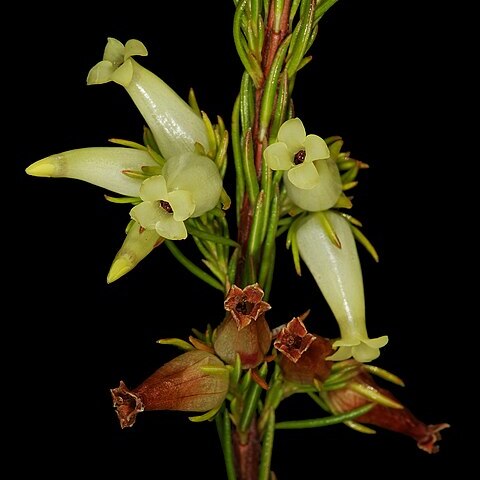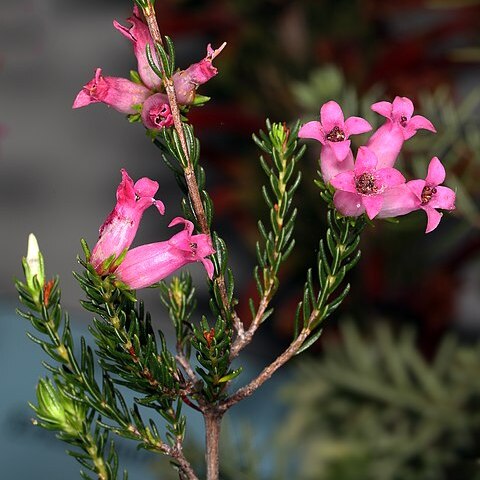Erect shrub to 60 cm (2 ft) or so. Branches glabrous. Leaves 4-nate, 4-6 mm long, erect or spreading, mostly straightish and seldom or never uniformly spreading-incurved, linear, sulcate, glabrous. Flowers terminal, 4-nate, often in scattered clusters, sometimes congested into dense masses towards the ends of the branches; peduncles 2-5 mm long, glabrous; bracts approximate or median, lax, sepal-like but smaller. Sepals very variable in length and shape, equalling or half as long as the corolla-tube, from lanceolate-linear, lanceolate, narrow-ovate or subelliptical, never widest above the middle, long-acuminate to acute, scarious, keeled, glabrous, ciliate, denticulate or naked. Corolla-tube 6-14 mm long, urceolate, narrow ovoid-urceolate or subconical, dry, glabrous, white, cream, yellow, rose or wine-red; lobes variable in size, stellately spreading, obtuse or acute, concolorous or white. Filaments filiform; anthers included, 1 mm long, lateral, oblong, muticous or minutely aristate; pore about 1/4 the length of the cell. Ovary oblong, glabrous rarely pubescent; style included; stigma capitate.
More
Erect, 1-2 ft. high; leaves erect or spreading, straightish (seldom or never uniformly spreading-incurved), linear, 2-3 lin. long; flowers in scattered clusters, sometimes congested into large dense masses towards the ends of the branches; pedicels 1-2 1/2 lin. long; bracts approximate, or subremote and lax; sepals very variable, from lanceolate-linear, lanceolate, narrow-ovate or subelliptical, never widest above the middle, long-acuminate to acute, always scarious, shortly ciliate, denticulate or naked, equalling or half as long as the corolla-tube; corolla urceolate, narrow-ovoid-urceolate or subconical, red or rosy; tube 3-7 lin. long; segments obtuse or acute, variable in size, concolorous or white; anthers oblong, about 1/2 lin. long, or rarely longer, minutely aristate or muticous.
Erect shrublet to 1 m. Flowers medium to large, urn-shaped to tubular urn-shaped, white, yellow, pink or red.


